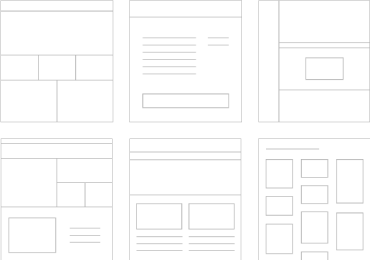Google is an American multinational technology company specializing in Internet-related services and products. These include online advertising technologies, search, cloud computing, and software. Most of its profits are derived from AdWords, an online advertising service that places advertising near the list of search results.
Google was founded by Larry Page and Sergey Brin while they were Ph.D. students at Stanford University. Together they own about 14 percent of its shares but control 56 percent of the stockholder voting power through supervoting stock. They incorporated Google as a privately held company on September 4, 1998. An initial public offering followed on August 19, 2004. Its mission statement from the outset was “to organize the world’s information and make it universally accessible and useful,” and its unofficial slogan was “Don’t be evil”. In 2004, Google moved to its new headquarters in Mountain View, California, nicknamed the Googleplex. In August 2015, Google announced plans to restructure under a new holding company called Alphabet Inc.
Rapid growth since incorporation has triggered a chain of products, acquisitions and partnerships beyond Google’s core search engine. It offers online productivity software including email (Gmail), a cloud storage service (Google Drive), an office suite (Google Docs) and a social networking service (Google+). Desktop products include applications for web browsing, organizing and editing photos, and instant messaging. The company leads the development of the Android mobile operating system and the browser-only Chrome OS for a netbook known as a Chromebook. Google has moved increasingly into communications hardware: it partners with major electronics manufacturers in the production of its “high-quality low-cost” Nexus devices and acquired Motorola Mobility in May 2012. In 2012, a fiber-optic infrastructure was installed in Kansas City to facilitate a Google Fiber broadband service.
The corporation has been estimated to run more than one million servers in data centers around the world (as of 2007). It processes over one billion search requests and about 24 petabytes of user-generated data each day (as of 2009). In December 2013, Alexa listed google.com as the most visited website in the world. Numerous Google sites in other languages figure in the top one hundred, as do several other Google-owned sites such as YouTube and Blogger. Its market dominance has led to prominent media coverage, including criticism of the company over issues such as search neutrality, copyright, censorship, and privacy.
History
Google began in January 1996 as a research project by Larry Page and Sergey Brin when they were both PhD students at Stanford University in Stanford, California.
While conventional search engines ranked results by counting how many times the search terms appeared on the page, the two theorized about a better system that analyzed the relationships between websites. They called this new technology PageRank; it determined a website’s relevance by the number of pages, and the importance of those pages, that linked back to the original site.
A small search engine called “RankDex” from IDD Information Services designed by Robin Li was, since 1996, already exploring a similar strategy for site-scoring and page ranking. The technology in RankDex was patented in July 1999 and used later when Li founded Baidu in China.
Page and Brin originally nicknamed their new search engine “BackRub”, because the system checked backlinks to estimate the importance of a site. Eventually, they changed the name to Google, originating from a misspelling of the word “googol”, the number one followed by one hundred zeros, which was picked to signify that the search engine was intended to provide large quantities of information. Originally, Google ran under Stanford University’s website, with the domains google.stanford.edu and z.stanford.edu.
The domain name for Google was registered on September 15, 1997, and the company was incorporated on September 4, 1998. It was based in the garage of a friend (Susan Wojcicki) in Menlo Park, California. Craig Silverstein, a fellow PhD student at Stanford, was hired as the first employee.
In May 2011, the number of monthly unique visitors to Google surpassed one billion for the first time, an 8.4 percent increase from May 2010 (931 million). In January 2013, Google announced it had earned US$50 billion in annual revenue for the year of 2012. This marked the first time the company had reached this feat, topping their 2011 total of $38 billion.
The company has reported fourth quarter (Dec 2014) Earnings Per Share (EPS) of $6.88 – $0.20 under projections. Revenue came in at $14.5 billion (16.9% growth year over year), also under expectations by $110 million.
Alphabet
On August 10, 2015, Google announced plans to reorganize its various interests as a holding company, Alphabet Inc., with Google as its leading subsidiary. Google will continue to be the umbrella company for Alphabet’s Internet interests. Upon completion of the restructure, Sundar Pichai will become CEO of Google.
Products and services
Advertising
Google on ad-tech London, 2010.
For the 2006 fiscal year, the company reported $10.492 billion in total advertising revenues and only $112 million in licensing and other revenues. In 2011, 96% of Google’s revenue was derived from its advertising programs. In addition to its own algorithms for understanding search requests, Google uses technology from the company DoubleClick, to project user interest and target advertising to the search context and the user history.
Google Analytics allows website owners to track where and how people use their website, for example by examining click rates for all the links on a page. Google advertisements can be placed on third-party websites in a two-part program. Google’s AdWords allows advertisers to display their advertisements in the Google content network, through either a cost-per-click or cost-per-view scheme. The sister service, Google AdSense, allows website owners to display these advertisements on their website and earn money every time ads are clicked.
One of the criticisms of this program is the possibility of click fraud, which occurs when a person or automated script clicks on advertisements without being interested in the product, causing the advertiser to pay money to Google unduly. Industry reports in 2006 claimed that approximately 14 to 20 percent of clicks were fraudulent or invalid.
In February 2003, Google stopped showing the advertisements of Oceana, a non-profit organization protesting a major cruise ship’s sewage treatment practices. Google cited its editorial policy at the time, stating “Google does not accept advertising if the ad or site advocates against other individuals, groups, or organizations.” The policy was later changed. In June 2008, Google reached an advertising agreement with Yahoo!, which would have allowed Yahoo! to feature Google advertisements on its web pages. The alliance between the two companies was never completely realized because of antitrust concerns by the U.S. Department of Justice. As a result, Google pulled out of the deal in November 2008.
In an attempt to advertise its own products, Google launched a website called Demo Slam, developed to demonstrate technology demos of Google Products.
Search engine
Main article: Google Search
Google homepage as of December 22, 2013
According to market research published by comScore in November 2009, Google Search is the dominant search engine in the United States market, with a market share of 65.6%. Google indexes billions of web pages, so that users can search for the information they desire through the use of keywords and operators.
In 2003, The New York Times complained about Google’s indexing, claiming that Google’s caching of content on its site infringed its copyright for the content. In this case, the United States District Court of Nevada ruled in favor of Google in Field v. Google and Parker v. Google. The publication 2600: The Hacker Quarterly has compiled a list of words that the web giant’s new instant search feature will not search.
Google Watch has criticized Google’s PageRank algorithms, saying that they discriminate against new websites and favor established sites. The site has also alleged that there are connections between Google and the National Security Agency (NSA) and the Central Intelligence Agency (CIA).
Google also hosts Google Books. The company began scanning books and uploading limited previews, and full books where allowed, into its new book search engine. The Authors Guild, a group that represents 8,000 U.S. authors, filed a class action suit in a New York City federal court against Google in 2005 over this service. Google replied that it is in compliance with all existing and historical applications of copyright laws regarding books. Google eventually reached a revised settlement in 2009 to limit its scans to books from the U.S., the UK, Australia, and Canada. Furthermore, the Paris Civil Court ruled against Google in late 2009, asking it to remove the works of La Martinière (Éditions du Seuil) from its database. In competition with Amazon.com, Google sells digital versions of new books.
On July 21, 2010, in response to Bing, Google updated its image search to display a streaming sequence of thumbnails that enlarge when pointed at. Though web searches still appear in a batch per page format, on July 23, 2010, dictionary definitions for certain English words began appearing above the linked results for web searches.
The “Hummingbird” update to the Google search engine was announced in September 2013. The update was introduced over the month prior to the announcement and allows users ask the search engine a question in natural language rather than entering keywords into the search box.
Productivity tools
Gmail, a free webmail service provided by Google, was launched as an invitation-only beta program on April 1, 2004, and became available to the public on February 7, 2007. The service was upgraded from beta status on July 7, 2009, at which time it had 146 million users monthly. The service was the first online email service with one gigabyte of storage. It was also the first to keep emails from the same conversation together in one thread, similar to an Internet forum. The service offers over 15 GB of free storage, shared with other Google Apps, with additional storage ranging from 20 GB to 16 TB available for $0.25 per 1 GB per year.
Gmail uses AJAX, a programming technique that allows web pages to be interactive without refreshing the browser. Steve Ballmer (Microsoft’s former CEO), Liz Figueroa, Mark Rasch, and the editors of Google Watch have criticised the privacy of Gmail, but Google claims that mail sent to or from Gmail is never read by a human being beyond the account holder and is only used to improve relevance of advertisements.
In 2004, Google started open source software project hosting, called Google Code, which allows developers to download in-development programs at no charge. Google Drive, another part of Google’s productivity suite, allows users to create, edit, and collaborate on documents in an online environment, similar to Microsoft Word. The service was originally called Writely, but was obtained by Google on March 9, 2006, and was released as an invitation-only preview. On June 6 after the acquisition, Google created an experimental spreadsheet editing program, which was combined with Google Docs on October 10.
Google for Work is a service from Google that provides customizable enterprise versions of several Google products using a domain name provided by the customer. It features several Web applications with similar functionality to traditional office suites, including Gmail, Hangouts, Google Calendar, Drive, Docs, Sheets, Slides, Groups, News, Play, Sites, and Vault. It was the vision of Rajen Sheth, a Google employee who later developed Chromebooks.
Doodles
Since 1998, Google has been designing special, temporary alternate logos to place on their homepage intended to celebrate holidays, events, achievements and people. The first Google Doodle was in honor of the Burning Man Festival of 1998. The doodle was designed by Larry Page and Sergey Brin to notify users of their absence in case the servers crashed. Subsequent Google Doodles were designed by an outside contractor, until Larry and Sergey asked then-intern Dennis Hwang to design a logo for Bastille Day in 2000. From that point onward, Doodles have been organized and created by a team of employees termed “Doodlers”.
Source: https://en.wikipedia.org/wiki/Google






